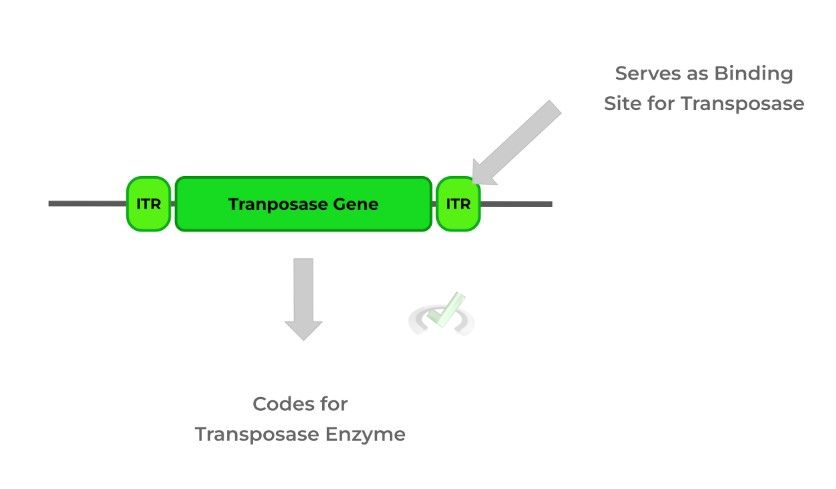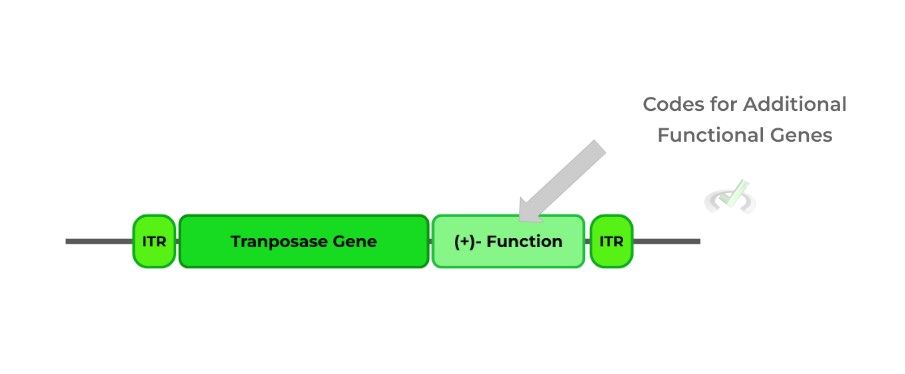I. What are Transposons?
To make an analogy to a common phrase, transposons can be attributed to and can be the so-called “black sheep” of cellular genetics. Because of their unique ability to switch positions around the genome as we’ll get into, they’ve sometimes been termed “the jumping genes”.
Though transposons are considered an anomaly in cellular genetics, they are in fact quite common! Just to give a number, it’s thought that 50% of the human genome is composed of transposable elements! In addition, as we brought up the human genome, transposons also exist in eukaryotic cells as well!
Just like the prions and viroids article, this is also more of a low yield topic that’ll appear on the MCAT. While discussing the structure and function is important, we’ll also focus on their significance in the potential problems they can cause, as we’ll highlight later.
II. Fundamentals of Transposon
Just by their name alone, you can already have a good idea of their unique characteristics! Transposons are essentially DNA sequences that switch/translocate between different positions in the genome!
In order to better understand how they do this, let’s get a brief, but sufficient picture of transposons structure.
A. Transposon Structure and Movement
There are 2 main characteristics that are present in transposon: a gene that codes for the enzyme, transposase, and inverted terminal repeat (ITR) ends. These constitute the simplest transposon structure.
Transposase functions similar to a restriction enzyme where it cuts the DNA in order to insert (or remove) the transposon.
The ITR ends function as binding recognition sites for transposase when it needs to excise an inserted transposon.
When translocating from one genome position to another, transposase first binds to the ITR ends and excises the inserted transposon.
Transposase and the transposon moves to another location within the genome. Note that some transposons require a specific target site while others can insert anywhere around the genome.
Finally, transposase cuts the new site DNA sequence to allow for the insertion of the transposon.
Additionally, transposons may also have other genes associated which give them additional functions, as shown below.

III. Bridge/Overlap
Though the function of transposons is not well understood, one of the possible problems that it can cause in public health is the development of antibiotic resistance.
I. Development of Antibiotic Resistance
As mentioned above, transposons may also contain other genes conferring additional function: one of these genes can be an antibiotic resistance gene.
Because of their nature, these antibiotic resistance transposons can also translocate into another bacteria’s genome to also confer antibiotic resistance.
In order for the original bacterium to retain its antibiotic resistance, replicative transposition occurs where the transposon is replicated, which can insert itself into the new bacterial genome.
A. Transposon Structure and Movement
2 key components of transposon structure are the transposase gene sandwiched between inverted terminal repeats (ITRs). Though this is the simplest structure, transposons may also have additional genes which confer other functions such as antibiotic resistance.
Transposase utilizes the ITRs as binding recognition sites to cut out the and excise the transposon.
Afterwards, transposase cuts at another DNA sequence site which allows for the insertion of the transposon at the new location.V. Practice
Take a look at these practice questions to see and solidify your understanding!
Sample Practice Question 1:
Which of the following lists the transposition events below in order?
I. Transposase Binding to ITRs
II. Transposon Excision
III. Transposon Insertion
A. I, II, III
B. III, II, I
C. II, III, I
D. I, III, II
Ans. A
This answer corresponds to the correct order of transposition. Transposase utilizes the ITRs as a binding site and excises the transposons. It then cuts the DNA at another location which allows for the insertion of the transposon.
Sample Practice Question 2:
Which of the following is not a necessary component of transposon?
A. Transposase Gene
B. Inverted Terminal Repeats
C. Antibiotic Resistance Gene
D. More than 2 of the above
Ans. C
This question just requires you to understand the basic structure of transposons which have a gene coding for transposase and inverted terminal repeats (ITRs) which are used as binding sites for the transposase enzyme.







 To help you achieve your goal MCAT score, we take turns hosting these
To help you achieve your goal MCAT score, we take turns hosting these 





















 reviews on TrustPilot
reviews on TrustPilot